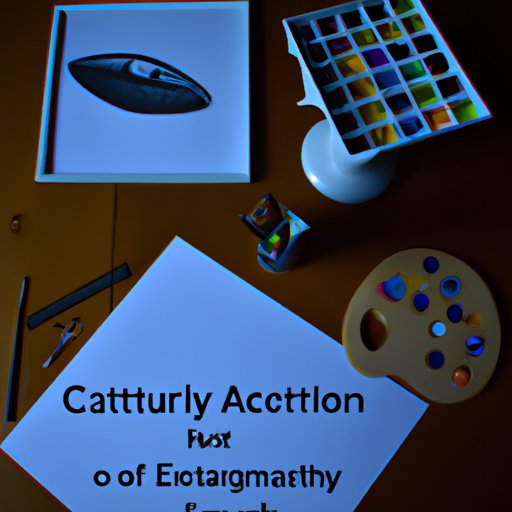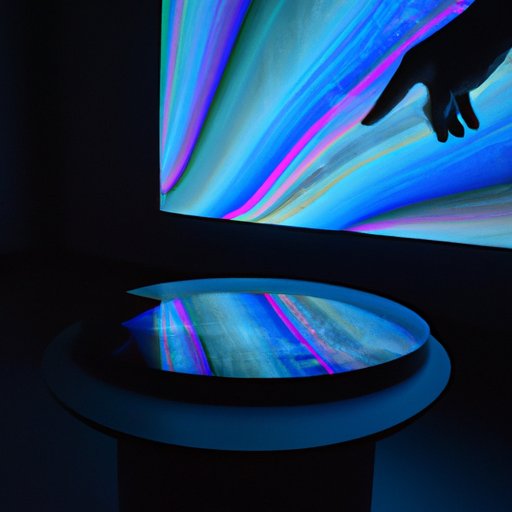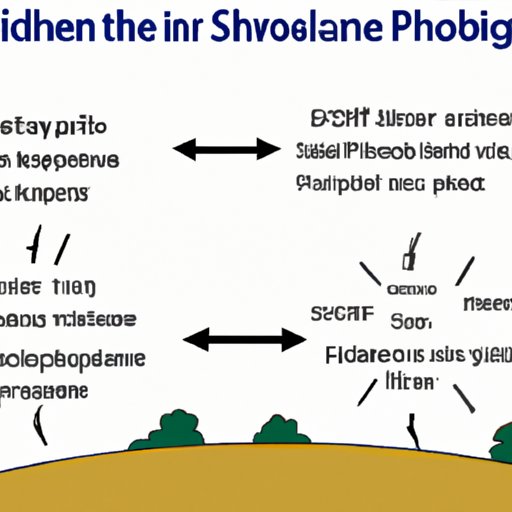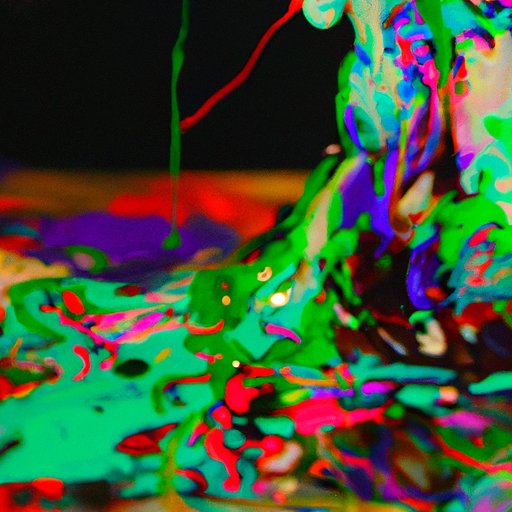Introduction
Art and science have long been viewed as two distinct disciplines that do not overlap. However, closer examination reveals a surprising amount of similarities between the two. This article will explore how art and science are similar by examining their use of creativity, beauty, mathematics, observation, technology, problem solving, and experimentation.
Examining the Role of Creativity in Both Fields
Creativity is an essential element of both art and science. While it is often seen as a purely artistic concept, creativity is also necessary for making scientific discoveries. As Dr. Robert Root-Bernstein, a professor at Michigan State University, states: “We need to recognize that creativity is a fundamental part of science, not just an adjunct to it.”
Exploring How Creativity is Used in Art
Artists use creativity to explore new ideas and express themselves through their work. They draw upon their imagination to create works of art that reflect their unique vision. Through trial and error, they may discover new techniques or styles to express their ideas. In this way, creativity is essential for artistic progress.
Investigating How Creativity is Used in Science
Scientists also rely on creativity to make new discoveries. They must think outside the box to come up with innovative solutions to complex problems. By using creative approaches to problem solving, scientists can develop new theories and technologies that have the potential to revolutionize our understanding of the world. In this way, creativity is essential for scientific progress.
Exploring the Concept of Beauty in Art and Science
The concept of beauty is important in both art and science. Artists strive to create beautiful works of art that evoke emotion and inspire contemplation, while scientists aim to uncover the underlying beauty of nature.
Analyzing How Beauty is Defined in Art
Beauty in art is subjective; what one person finds beautiful may not be considered beautiful by another. For example, abstract art may be seen as beautiful by some, while others may find it confusing or unappealing. Ultimately, beauty in art is in the eye of the beholder.
Discussing How Beauty is Defined in Science
Beauty in science is more objective. Scientists strive to uncover the underlying order and harmony in the universe. When they observe patterns and relationships in nature, they experience a sense of awe and wonder at its beauty. As physicist Richard Feynman stated: “The beauty of a physical theory is directly related to its accuracy and simplicity.”

Discussing How Mathematics is Used in Both Disciplines
Mathematics plays an important role in both art and science. Artists use mathematics to create aesthetically pleasing compositions, while scientists use it to model and understand natural phenomena.
Examining the Use of Mathematics in Art
Artists use mathematical principles, such as symmetry and proportion, to create aesthetically pleasing works of art. For example, the Fibonacci sequence, which is a series of numbers where each number is the sum of the previous two, is often used in the composition of paintings, sculptures, and other works of art. By utilizing mathematical principles, artists can create works of art that are visually appealing.
Investigating the Use of Mathematics in Science
In science, mathematics is used to model and understand natural phenomena. Scientists use equations and formulas to describe how different elements interact and to make predictions about future events. By utilizing mathematics, scientists can gain a better understanding of the world around them.

Analyzing the Power of Observation in Art and Science
Observation is an important tool in both art and science. Artists use observation to gather inspiration and information, while scientists use it to collect data and make conclusions.
Exploring How Observation is Used in Art
Artists use observation to gain inspiration for their work. By observing the world around them, they can find ideas for new works of art. They may also use observation to inform their work, such as by studying the anatomy of a human figure or the structure of a landscape.
Investigating How Observation is Used in Science
Scientists also use observation to collect data and make conclusions. By carefully observing natural phenomena, they can gather evidence that can be used to support or refute hypotheses. For example, observations of the night sky helped Galileo Galilei formulate his theories about the motions of the planets.

Exploring the Use of Technology in Art and Science
Technology is an important tool in both art and science. Artists use technology to create digital works of art, while scientists use it to conduct experiments and analyze data.
Examining How Technology is Used in Art
Artists use technology to create digital works of art, such as photographs, videos, and animations. By utilizing modern technology, such as computer software, they can achieve effects that would not be possible with traditional media. Technology has also enabled artists to share their work with a larger audience than ever before.
Investigating How Technology is Used in Science
Scientists use technology to conduct experiments and analyze data. For example, they may use advanced instruments, such as microscopes and telescopes, to observe natural phenomena. They may also use computers to simulate experiments or make calculations. By utilizing technology, scientists can gain a better understanding of the world around them.

Comparing the Problem Solving Approaches of Both Fields
Both art and science involve problem solving. Artists use problem solving to create works of art, while scientists use it to make new discoveries.
Exploring the Problem Solving Approach of Art
Artists use problem solving to create works of art. They must identify and solve problems in order to create works that are aesthetically pleasing. For example, an artist may struggle to find the right colors for a painting or the right materials for a sculpture. By using problem solving skills, the artist can find solutions to these problems.
Investigating the Problem Solving Approach of Science
Scientists also use problem solving to make new discoveries. They must identify and solve problems in order to advance their understanding of the world. For example, a scientist may struggle to explain why certain organisms behave in certain ways. By using problem solving skills, the scientist can develop theories and models that explain these behaviors.
Examining the Importance of Experimentation in Both
Experimentation is an important component of both art and science. Artists use experimentation to explore new techniques and materials, while scientists use it to test hypotheses and collect data.
Exploring the Use of Experimentation in Art
Artists use experimentation to explore new techniques and materials. For example, a painter may experiment with different colors or brush strokes, or a sculptor may experiment with different materials. By experimenting, the artist can discover new ways of expressing their ideas.
Investigating the Use of Experimentation in Science
Scientists also use experimentation to test hypotheses and collect data. By conducting experiments, they can determine whether their theories are accurate or if they need to be revised. Experiments also allow scientists to gather evidence that can be used to support or refute hypotheses.
Conclusion
This article has explored how art and science are similar by examining their use of creativity, beauty, mathematics, observation, technology, problem solving, and experimentation. It is clear that both art and science involve many of the same processes and require similar skills. By understanding these similarities, we can gain a deeper appreciation for both disciplines and the contributions they have made to society.
(Note: Is this article not meeting your expectations? Do you have knowledge or insights to share? Unlock new opportunities and expand your reach by joining our authors team. Click Registration to join us and share your expertise with our readers.)
